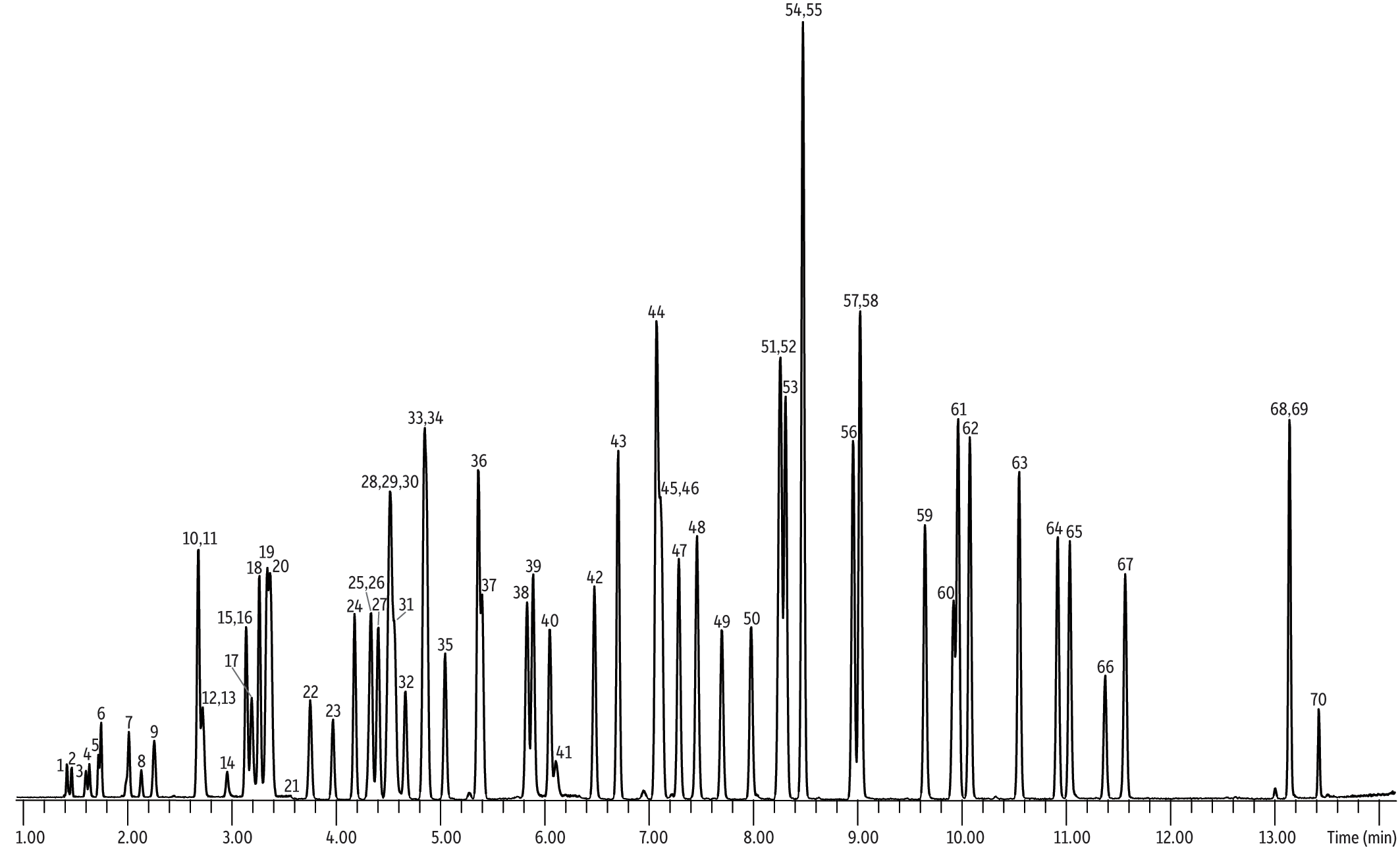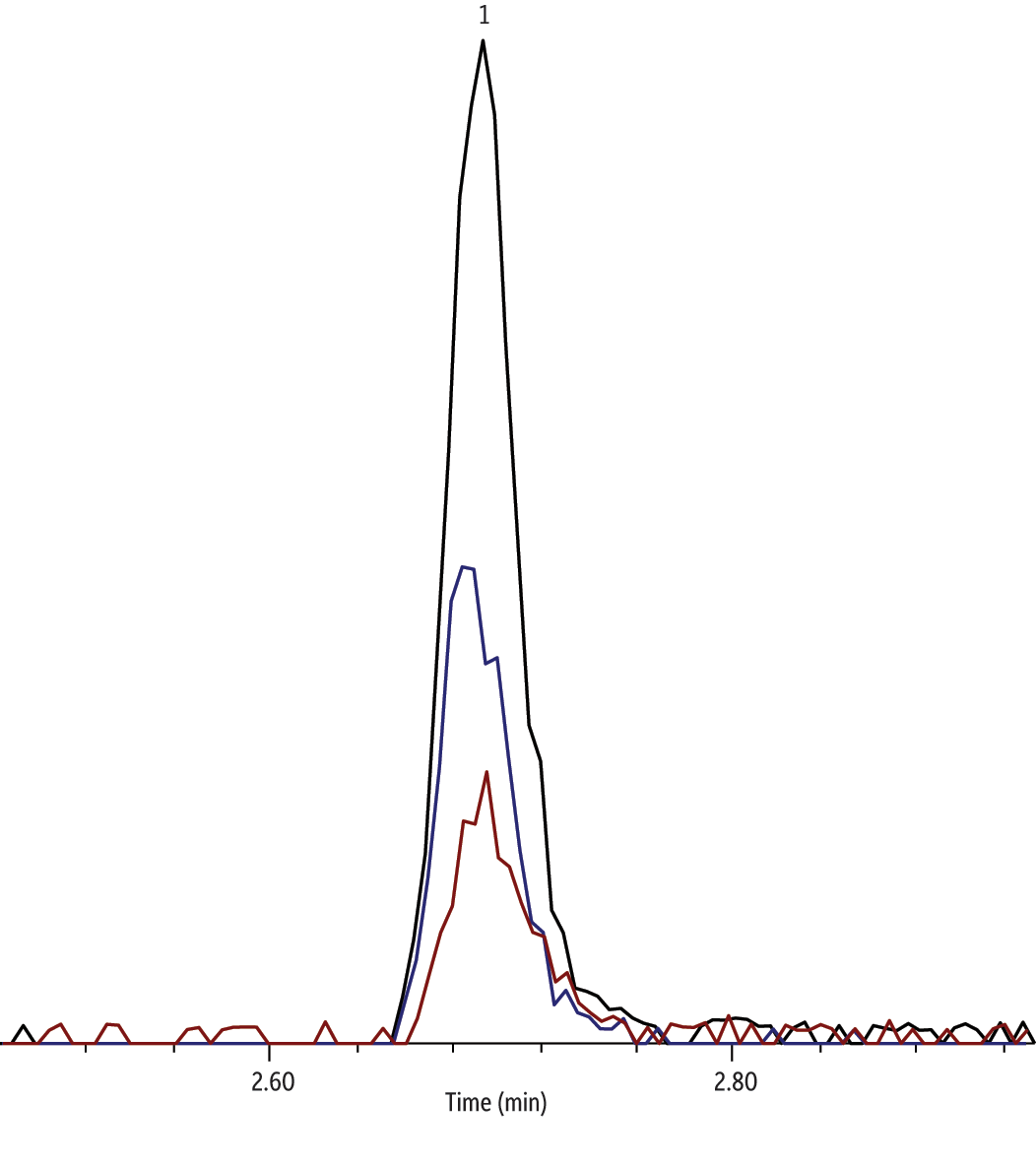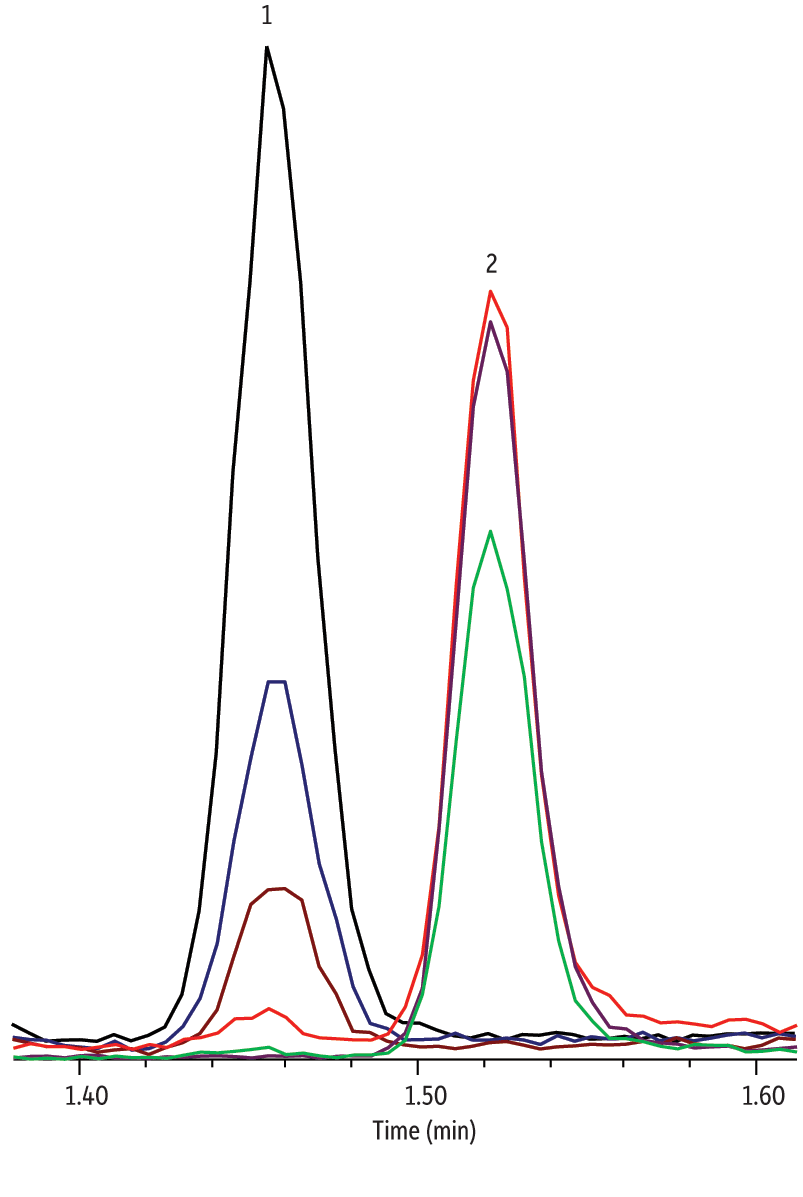Laboratories that analyze volatile organic compounds (VOCs) in whole air canister samples often follow U.S. Environmental Protection Agency (EPA) Compendium Method TO-15 [1]. Many analysts using this method are under the incorrect impression that they must use a 60 m x 0.32 mm x 1.00 µm 1-type column. However, potential and current end users need to know that Method TO-15 is only a guidance document for a performance-based method. Therefore, there is considerable flexibility in GC column selection both in terms of stationary phase and column dimensions. In regards to chromatographic column selection, section 7.2.2.2 of Method TO-15 states: “100% methyl silicone or 5% phenyl, 95% methyl silicone fused silica capillary columns of 0.25- to 0.53-mm I.D. of varying lengths are recommended for separation of many of the possible subsets of target compounds involving nonpolar compounds. However, considering the diversity of the target list, the choice is left to the operator subject to the performance standards given in Section 11.”
This flexibility provides a critical opportunity for optimization because target analyte lists vary among laboratories. Method TO-15 is applicable to a subset of 97 VOCs from the list of 189 hazardous air pollutants (HAPs) included in Title III of the Clean Air Act Amendments. Most laboratories are analyzing a standard suite of ~65 VOCs, and some researchers include an additional dozen compounds, but only a few laboratories are analyzing all 97 components. Because labs vary in their target compound lists and because the method allows any column meeting the following performance criteria to be used, Restek has tested a number of GC columns and evaluated their suitability for analyzing VOCs in whole air canister samples. Method TO-15 criteria are blanks with less than 0.2 ppbv of targeted VOCs; calibrations with percent relative standard deviation (%RSD) for the relative response factor (RRF) of 30%; method detection limits (MDLs) of ≤0.5 ppbv; replicate precisions within 25%; and audit accuracies within 30% for concentrations normally expected in contaminated ambient air (0.5 to 25 ppbv).
Initial work demonstrated that a significant time savings could be realized by using a 30 m column instead of a 60 m column. GC analysis times of less than 20 minutes were achieved and all method criteria were met using an Rxi-5Sil MS column in a 30 m x 0.32 mm x 1.00 µm configuration [2]. In more recent work, Restek successfully used 1-, 5-, 624-, and VMS-type phases in 30 m column formats for the 65 most commonly analyzed whole air VOCs (see results for all columns) [3]. All of the phases worked well, with each column having advantages and disadvantages. However, the Rtx-VMS column (30 m x 0.32 mm x 1.80 µm, cat.# 19919) stood out as being the best overall column for VOCs in whole air canister samples due to its excellent chromatographic performance for difficult polar VOCs, as well as its fast total analysis time (Figure 1). This conclusion is not unexpected because the Rtx-VMS column is the only column on the market that was developed specifically for the analysis of volatile compounds via mass spectrometry (VMS = Volatile Mass Spec). The fit-for-purpose phase chemistry and dimensions of the Rtx-VMS column mean that all the target VOCs were distributed evenly across the GC run, with no critical coelutions (Figure 1). It is important to note that this was accomplished with a very simple GC program utilizing close to speed optimized flows (SOFs) and optimal heating rates (OHRs) up to 150 °C (for further discussion, see Restek’s blog on SOF and OHR). Although this can be achieved with the other column phases, it requires more creative GC programs and fine-tuning.
In addition, as shown in Figure 2, the midpolarity and unique selectivity of the Rtx-VMS column results in polar VOCs in whole air canister samples (especially ethanol and isopropyl alcohol) having drastically better peak shape (i.e., no hint of tailing) relative to the other column phase types. Highly symmetrical peak shapes mean integrations are easier and more reliable, which contributes to better accuracy and precision.
Lastly, while many coeluting VOCs in whole air canister samples can be determined by mass spectrometry, compounds with shared ions—such as butane and 1,3-butadiene—cannot be accurately quantified by mass spectrometry unless they are chromatographically separated. Butane and 1,3-butadiene do not coelute on the Rtx-VMS column; however, they often coelute on other phases, which can result in laboratories reporting artificially high concentrations. Since no critical coelutions were found on the Rtx-VMS column for the 65 VOCs that were evaluated, the Rtx-VMS column is recommended as the best choice when chromatographic separation is essential.
In conclusion, laboratories analyzing VOCs in whole air canister samples using Method TO-15 should be aware that the method is performance based. This provides flexibility to labs that wish to shorten analysis times by moving from a 60 m column to a 30 m column. While excellent results can be obtained on a wide variety of 30 m columns—including Rxi-1ms, Rxi-5ms, Rxi-5Sil MS, and Rxi-624Sil MS columns—the Rtx-VMS column offers the best overall performance and is particularly recommended when polar or coeluting VOCs are included in the list of target analytes. The highly symmetrical peak shapes and lack of critical coelutions will improve calibrations, MDLs, and replicate precisions.
References
- U.S. Environmental Protection Agency, Compendium Method TO-15, Determination of volatile organic compounds [VOCs] in air collected in specially-prepared canisters and analyzed by gas chromatography/mass spectrometry (GC/MS), January 1999. http://www3.epa.gov/ttnamti1/files/ambient/airtox/to-15r.pdf
- J.S. Herrington, Rapid determination of TO-15 volatile organic compounds (VOCs) in air, Application note, EVAN1725A-UNV, Restek Corporation, 2014.
- J.S. Herrington, Air columns – part II: You only need a 30 m column for EPA Method TO-15!, ChromaBLOGraphy, Restek Corporation, 2013.
- J. Cochran, Speed optimized flow and optimal heating rate in gas chromatography, ChromaBLOGraphy, Restek Corporation, 2010.




